
ABOUT THE AUTHOR
Ron Pattinson writes extensively on the history of beer in Britain and in Europe, with particular emphasis on London, Scotland, and Germany. He is the author of several books on beer history and has worked with brewers in the UK, USA, and Europe to re-create beers from the past. These interests are covered in his expansive blog, Shut up About Barclay Perkins. He also maintains a websitewww.europeanbeerguide.netwith pub guides to towns across Europe. He writes a regular column for BeerAdvocate magazine and has given lectures on subjects as diverse as the history of Lager brewing in the UK and the beers of Poughkeepsie brewer, Vassar.
He lives in Amsterdam with his wife and two teenage sons.
REDISCOVERED RECIPES FOR CLASSIC BREWS
DATING FROM 1800 TO 1965
Ron Pattinson

2014 by Quarry Books
Text 2014 Ron Pattinson
First published in the United States of America in 2014 by
Quarry Books, a member of
Quayside Publishing Group
100 Cummings Center
Suite 406-L
Beverly, Massachusetts 01915-6101
Telephone: (978) 282-9590
Fax: (978) 283-2742
www.quarrybooks.com
Visit www.QuarrySPOON.com and help us celebrate food and culture one spoonful at a time!
All rights reserved. No part of this book may be reproduced in any form without written permission of the copyright owners. All images in this book have been reproduced with the knowledge and prior consent of the artists concerned, and no responsibility is accepted by the producer, publisher, or printer for any infringement of copyright or otherwise, arising from the contents of this publication. Every effort has been made to ensure that credits accurately comply with information supplied. We apologize for any inaccuracies that may have occurred and will resolve inaccurate or missing information in a subsequent reprinting of the book.
10 9 8 7 6 5 4 3 2 1
Digital edition published in 2014
Digital edition: 978-1-61058-887-4
Softcover edition: 978-1-59253-882-9
Library of Congress Cataloging-in-Publication Data available
Design: Studioink.co.uk
Cover Image: Time & Life Pictures/Getty Images
Photography: Duncan Davis / Alamy,
Studio photography 2013 Glenn Scott Photography/www.glennscottphotography.com
Historical Images: Jonny Thompson/www.jonnythompson.co.uk
CONTENTS
Recipes
Recipes
Recipes
Recipes
Recipes
Recipes
Recipes
Recipes
Recipes
 INTRODUCTION
INTRODUCTIONI ve been fascinated by historic beers ever since I first saw an old Batemans brewery mirror advertising the exotic products of yesteryear. Later, when looking at old labels, I wondered what the beers behind them had been like. For a long time, it seemed tasting these beers would remain an unfulfilled dream.
Then I realized that far from being lost, the details of these beers had been carefully stored in archives and brewery store rooms across Britain. Discovering the secrets of these lost beers was a possibility. All that was required was a bit of effort and determination.
Just how much effort, I was luckily unaware of at the start of my journey into beers past. I say luckily because, had I realized how much of my time it would devour, I might never have started. Days spent arched over dusty Whitbread records at the London Metropolitan Archives, snapping away crazily like a hyperactive paparazzi. Weeks consumed in puzzling over scrawly handwriting and incomprehensible abbreviations. Worth it in the end, to learn just how they had brewed in the past.
There were many surprises in the course of my research. The past turned out to be a far more complex and dynamic place than I had imagined. Every generation had its own beer and its own way of brewing them.
But dusty records will tell you only so much. All that dust left me with a roaring thirsta thirst for the beers of the past. Happily, there were brewers who shared my thirst for history and were keen to brew the recipes Id unearthed. Menno Olivier at De Molen, John Keeling and Derek Prentice at Fullers, and Dann Paquette at Pretty Things made my dreams come true.
I started my blog, Shut up About Barclay Perkins (the name comes from a common complaint of my children, fed up with hearing endless trivia about London brewer Barclay Perkins), to publish what Id discovered about Britains brewing history and was delighted to learn that others shared my enthusiasm.
Now its time to assemble what Ive learned and make it available to home brewers in an easily digestible form. This book describes the development of the major British styles between 1800 and 1965 along with recipes to allow you to brew typical beers from the whole of that period. This is when the styles that dominate modern craft brewing took form: IPA, porter, stout, and barley wine. As an extra-special treat, Ive thrown in a few extinct German beer styles.
I hope you enjoy reading what follows, brewing the beers, and drinking them. Because when it comes down to it, beer is all about the pleasure of drinking a delicious pint. That its a beer your grandfather might have drunk only adds to the fun.
Ron Pattinson,
21st March 2013, Amsterdam

B eer has four basic ingredients: malt, water, hops, and yeast. The malt provides the sugars, which the yeast ferments into alcohol. The hops add beers distinctive bitter note.
For much of the period covered by this book, those four ingredients, and sometimes sugar, were the only ingredients allowed by law. It was only in 1880 that the law was liberalized and adjuncts such as corn and rice were allowed as alternative sources of fermentable material.
 MALT
MALTM alt is produced by fooling barley into germinating and then stopping the process before the grain sprouts by drying it in a kiln. This starts the conversion of the starches in the grain into sugar that yeast can ferment.
Historically, far fewer types of malt were available than today. In the first half of the nineteenth century, only five types were used: pale malt, white malt, amber malt, brown malt, and black malt. Crystal malt was developed quite early in the nineteenth century but came into common use only in the twentieth century.
Britain was unable to grow enough grain for either bread making or brewing purposes from the middle of the 1800s onward. Large quantities of barley were imported, but it was always malted in Britain. It made sense, as British malting technology was the best in the world. Much came from North America, particularly California, but many other regions also supplied grain, such as the Middle East, Australia, Chile, and continental Europe.


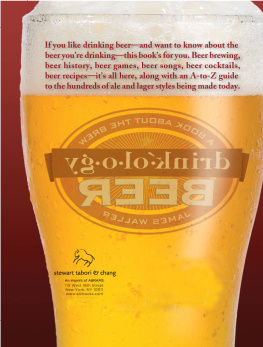
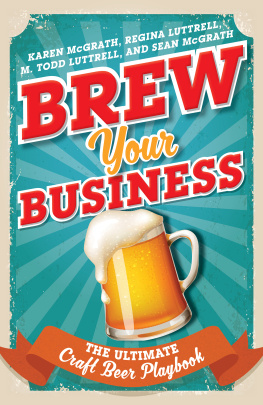


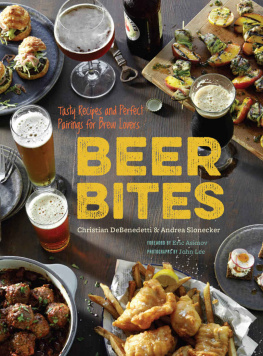

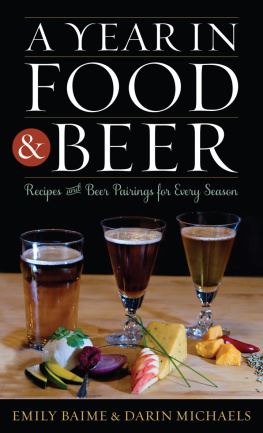
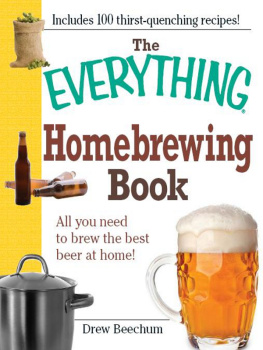
 ABOUT THE AUTHOR
ABOUT THE AUTHOR



